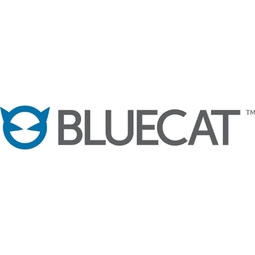
Technology Category
- Drones - VTOL & VTOL Hybrid Drones
- Infrastructure as a Service (IaaS) - Hybrid Cloud
Applicable Industries
- National Security & Defense
Use Cases
- Inventory Management
- Tamper Detection
Services
- Cloud Planning, Design & Implementation Services
The Customer
Not disclosed
About The Customer
The customer is a multinational insurer that had heavily invested in Azure five years ago. The company has approximately 20 application sites and over 450 user sites that need to be interconnected. The insurer wanted to maintain seamless operations and ensure consistent policy enforcement, security, and risk management across its entire hybrid estate. The company's security and risk team had mandated the use of private IP for internal network resources. However, the cloud team faced challenges in meeting both their security and scalability requirements using their Azure toolset alone.
The Challenge
A multinational insurer had heavily invested in Azure five years ago and was now facing a challenge with cloud expansion. The company had around 20 application sites and over 450 user sites to interconnect, and it wanted to maintain seamless operations. More importantly, it wanted to ensure consistent policy enforcement, security, and risk management across its entire hybrid estate. The security and risk team had mandated the use of private IP for internal network resources. However, the cloud team, without fully understanding the networking implications, deployed Private Endpoints in Azure to secure the IP. This made it impossible to resolve DNS and ensure connectivity between data center resources and Azure DNS zones. The cloud team realized that they could not meet both their security and scalability requirements using their Azure toolset alone.
The Solution
To find a solution, the cloud team collaborated with their counterparts in networking and consulted with their on-premises DNS, DHCP, and IP address management (DDI) vendor, BlueCat. The resulting solution, which is now in production, meets all the insurer’s requirements. By combining the knowledge, experience, and tools from both the cloud and network teams, the insurer was able to reduce global operational costs due to a consolidated management platform and automation. They also improved their security and compliance posture through global visibility in addition to the support of private IP. Furthermore, they were able to shorten the time to deploy services in its hundreds of Azure subscriptions.
Operational Impact
Quantitative Benefit

Case Study missing?
Start adding your own!
Register with your work email and create a new case study profile for your business.
Related Case Studies.

Case Study
Data Capture for Afghanistan Forces
Electronic equipments on the field of Afghanistan provided information on the status of the vehicle and to identify potential threats surrounding it to the British Force. The monitoring and interpretation of this data requires robust and sophisticated digitization for data capture and communication.
Case Study
Enhancing Security and Compliance in Remitly's Global Money Transfer Service with Fastly
Remitly, an online remittance service, was faced with the challenge of securing its proprietary global transfer network. The company needed a security solution that could meet PCI requirements and protect customers' sensitive transactions through its mobile application. The solution had to be capable of defending against new and emerging attack types without impacting performance. Remitly also had to deal with irregular traffic patterns, such as a sudden spike in account transfers from a small network segment on the Pacific coastline of South America. The company needed to determine in real time whether such traffic indicated an attack or valid requests. A traditional web application firewall (WAF) would not be able to distinguish this traffic, potentially leading to customer frustration if the IP was blacklisted.

Case Study
Major Aerospace Company Automates Asset Management
The O&M division of an aerospace and global security company was using spreadsheets to manually track more than 3,000 assets assigned to students and staff. Maintaining audit trails for this high volume of equipment became increasingly time-consuming and challenging. The chore involved knowing precisely what equipment was on hand, what had been issued, its location and the name of the custodial owner of each item. Every aspect of this task was carried owner of each item. Every aspect of this task was carried out by individuals with spreadsheets. Manually documenting the full lifecycle of each asset added to the burden. This included tracking maintenance requirements and records, incidents and damages, repairs, calibrations, depreciation, and end-of-life data.

Case Study
Securing a Large Data Center in the EMEA Region: An IoT Case Study
A leading data-center operator in the EMEA region, with multiple facilities spanning over 25,000 square meters, faced significant security challenges. The operator experienced interruptions in their internal IT network due to unsupervised work of third-party technicians. Despite having a high-end building control system that provided 24x7 monitoring and control to all the building’s infrastructure, the data center was vulnerable from a cyber perspective as it was connected to the IT network infrastructure. The operator launched an urgent OT cyber security project that included both IT-OT network segmentation and OT network asset mapping and anomaly detection. The main objectives were to harden the security of the server systems, secure the facility’s power supply and server cooling system, strengthen the segmentation between building and operational systems, create a visual OT network map, and set up a system for presenting supply-chain attacks that may threaten the data center through equipment vendors’ maintenance activities.

Case Study
Leveraging Graph Technology for Enhanced Cybersecurity: A Case Study on MITRE's CyGraph
MITRE, a federally-funded, not-for-profit company that manages seven national research and development laboratories in the United States, was grappling with the challenge of managing an influx of cybersecurity data. The constant changes in network environments were impacting the security posture of U.S. government agencies. Intrusion alerts, anti-virus warnings, and seemingly benign events like logins, service connections, and file share access were all potentially associated with adversary activity. The cybersecurity researchers at MITRE needed to go beyond rudimentary assessments of security posture and attack response. This required merging isolated data into higher-level knowledge of network-wide attack vulnerabilities and mission readiness. The challenge was not the lack of information, but the ability to assemble disparate pieces of information into an overall analytic picture for situational awareness, optimal courses of action, and maintaining mission readiness. The team also struggled with fully comprehending a given security environment and mapping all known vulnerabilities.

Case Study
Enhancing Security Precision with IoT: A Case Study of Guardsman Group
Guardsman Group, a leading security company in the Caribbean, faced a significant challenge in maintaining the security of its digital infrastructure. The company provides security equipment, personnel, and systems for various businesses across the region. However, one of its offices experienced a security incident that affected all communications at that location. The existing security tools were not sufficient to provide the necessary protection, and it took hours to identify the source of the issue. This incident highlighted the need for a dynamic solution that could proactively identify threats. The company's primary concern was any disruption to its business, as it manages a significant portion of Jamaica's money and cannot afford for its operations to go down.







